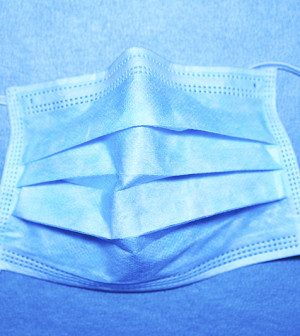- Navigating Your Midlife Crisis: Embracing New Possibilities
- City Raccoons Showing Signs of Domestication
- Mapping the Exposome: Science Broadens Focus to Environmental Disease Triggers
- One Week Less on Social Media Linked to Better Mental Health
- Your Brain Changes in Stages as You Age, Study Finds
- Some Suicide Victims Show No Typical Warning Signs, Study Finds
- ByHeart Formula Faces Lawsuits After Babies Sickened With Botulism
- Switch to Vegan Diet Could Cut Your Greenhouse Gas Emissions in Half
- Regular Bedtime Does Wonders for Blood Pressure
- Dining Alone Could Mean Worse Nutrition for Seniors
Norovirus a Costly Bug

The stomach bug norovirus sickens nearly 700 million people worldwide annually and costs health care systems more than $4 billion a year, researchers report.
And when lost productivity and other societal costs are included, that price tag jumps to more than $64 billion, the researchers added.
The findings are believed to be the first to assess the global economic impact of the highly contagious virus, which is common in both poor and rich nations, the researchers said.
“You only seem to hear about it when people get sick on a cruise ship or at a restaurant, but norovirus is everywhere,” said study leader Sarah Bartsch, a research associate at Johns Hopkins Bloomberg School of Public Health, in Baltimore.
“It doesn’t matter how old you are or if you’re in a wealthy country or a poorer one or if you’ve had it before — you can get it again. And it really is unpleasant,” Bartsch said in a Hopkins news release. “But if we don’t focus on norovirus and teach people how to prevent it, little headway will be made to combat it.”
Norovirus can cause symptoms such as nausea, diarrhea and vomiting. There is no vaccine or treatment once you are infected, the researchers said.
The study, published online April 26 in the journal PLoS One, shows the need for increased efforts to prevent the disease, according to the authors.
“The costs associated with norovirus are high — higher than for many diseases, including rotavirus — that have gotten a lot more attention. Our study presents an economic argument for greater consideration of norovirus. It has been flying under the radar for too long,” study senior author Dr. Bruce Lee said in the news release. He is an associate professor in the department of international health at the Bloomberg School.
Measures to prevent transmission of norovirus include: proper hand washing; following safety precautions when preparing food; improving food and water sources; and keeping people who are sick with norovirus away from others.
More information
The U.S. Centers for Disease Control and Prevention has more on norovirus.
Source: HealthDay
Copyright © 2025 HealthDay. All rights reserved.










